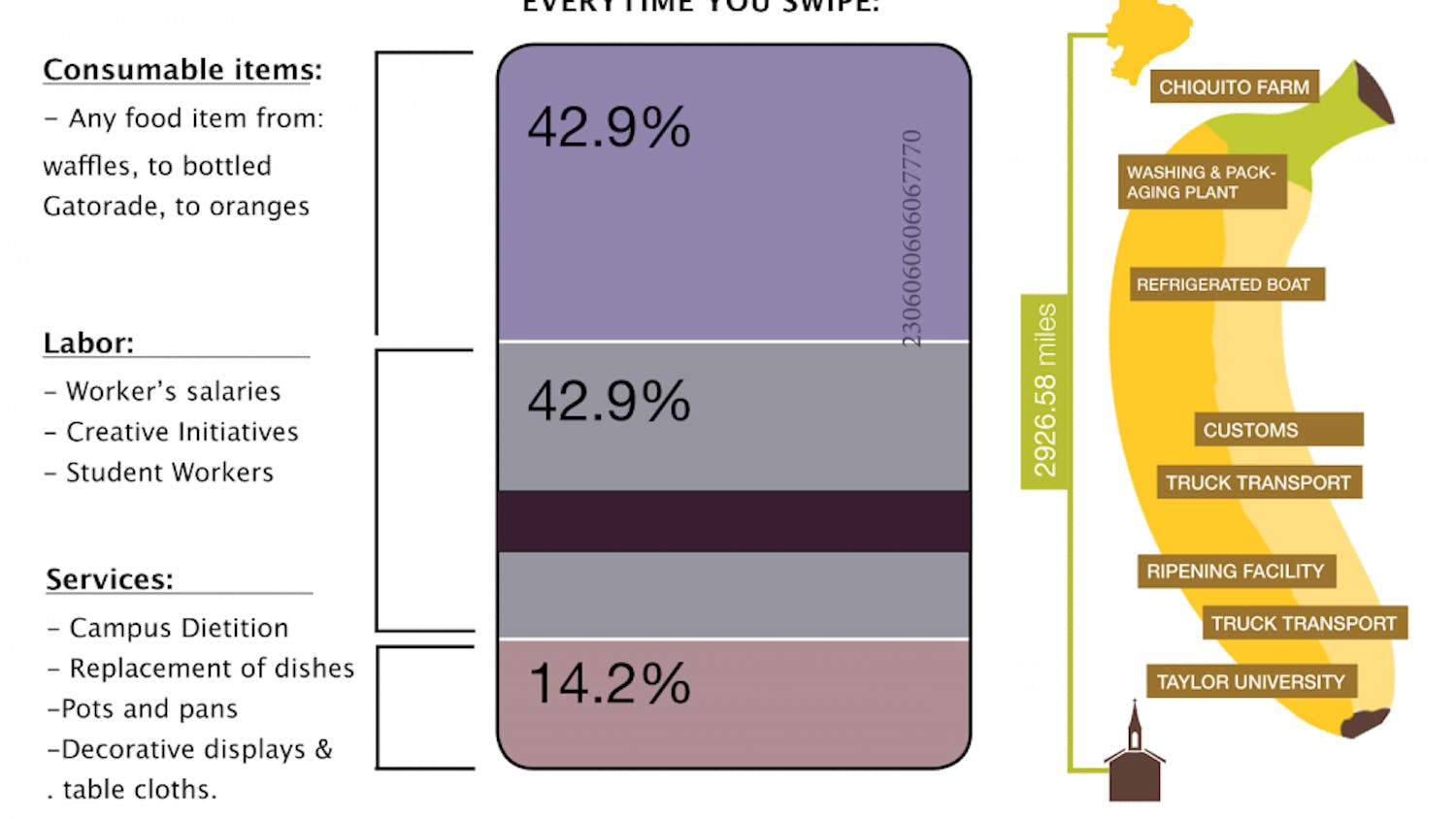Early last month dining services surprised Taylor students with changes to meal plans.
Students with the two larger dining packages must manage with 25 percent fewer dining dollars at the LaRita Boren Campus Center. The number of additional sides has also fallen to one.
“The changes are always going to keep coming, and they’re not all taking stuff away,” Nathaniel Malone, associate dining services director and executive chef, said.
“Every year you have to re-look at the entire plan; you have to re-look at the entire offering, and kind of put it in a context of this is what we’re offering now versus this is what we were offering before and how do we make it all work out financially.”
The plan with 19 meals per week used to have 200 dining dollars accompanying the typical meal swipes. Now these students possess 150 dining dollars. Students with 14 meals per week went from 100 dining dollars to 75.
Last year, a similar reduction to only one side for meals at Chick-fil-A foretold the broader limit now applied to all options in the Campus Center. Soups in the Campus Center also shifted from having the status of a side to being a separate purchase with dining dollars.
Mixed student reactions have appeared on campus.
“It seems valid since people always end the year with a ton of dining dollars that they just spend on pizzas,” Senior Josiah Adkins said in reaction to the change. “But it also feels cheap that they just added a new way to spend a bunch of dining dollars while also giving them less to use.”
The Reade Ave. Market, which opened on Aug. 22, offers a closer option to acquire various items that students might need.
When asked if the reduction in Campus Services and the appearance of the Reade Ave. Market were connected, Steve Olson, associate vice president of business development and services, cited the two developments as unrelated.
“It’s a constantly evolving, adapting and changing program,” Olson said. “It’s kind of the nature of reality is what it is. So, there’s things that get added sometimes with no change, no reduction. There’s reductions that happen sometimes with no adds. Sometimes there’s a net, zero, where it’s an add and a reduction.”
Malone, Olson and dining services director Nate Haugh all directed attention to a holistic look at the dining options and university services offered. They also brought to bear the progression of the Campus Center over the last two years.
Dining dollars began with enough for two meals per week. Now students have five meal swipes alongside additional dining dollars.
“I think it’s an add in the end,” Malone said. “They have more meals than they had before at the Dining Commons. It just plays out differently in the math.”
Malone and Olson both also referred to the large pool of dining dollars that often remain at the end of the semester as a motivator to a move to fewer dining dollars offered. Dining dollars began as a way to allow all students to use the Campus Center with ease.
The Dining Services staff also asked for student feedback.
“If students have suggestions for other things they’d like to see, whether on the food line or in the menu, I know these guys [Malone and Haugh] would much rather hear it from students than scuttlebutt that students aren’t happy about something,” Olson said.





